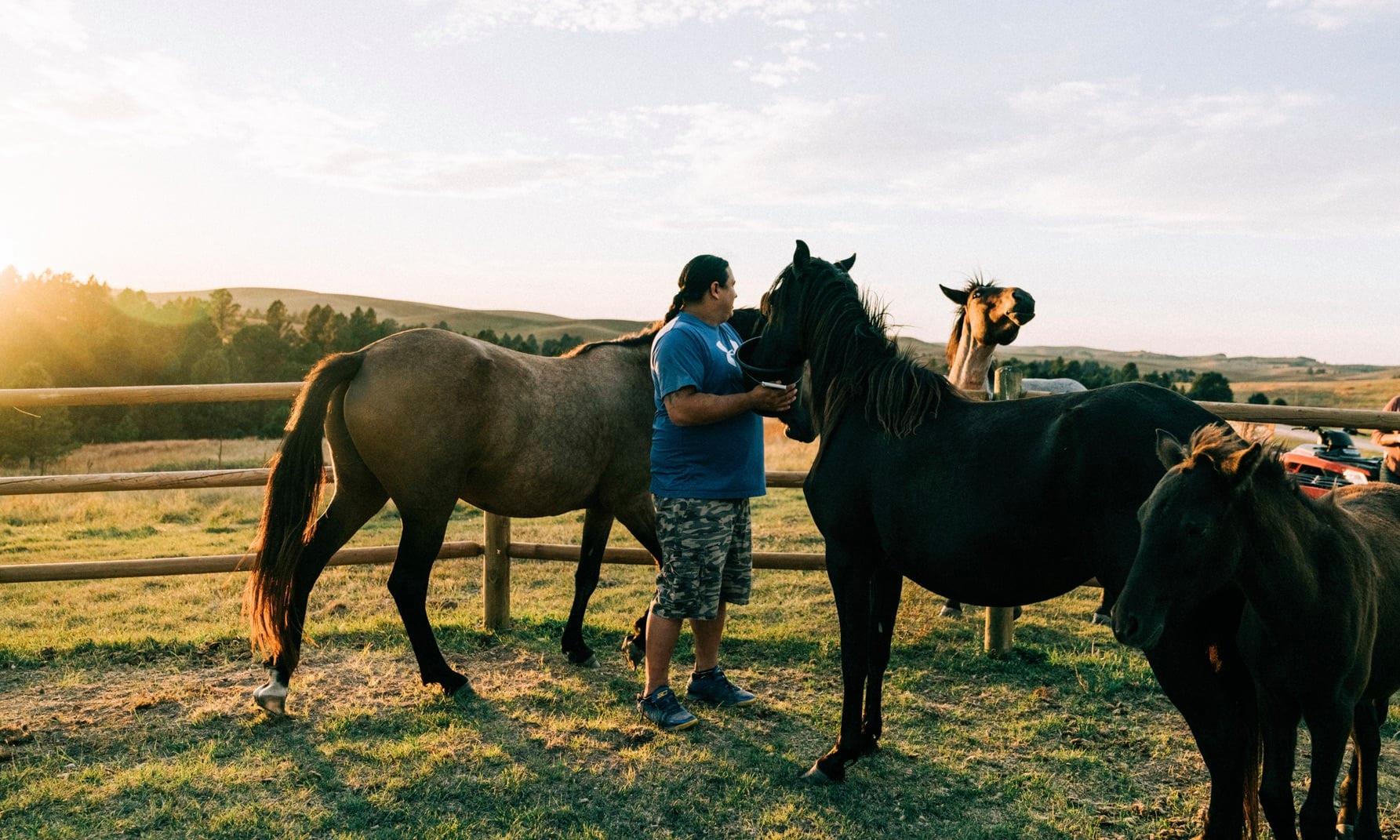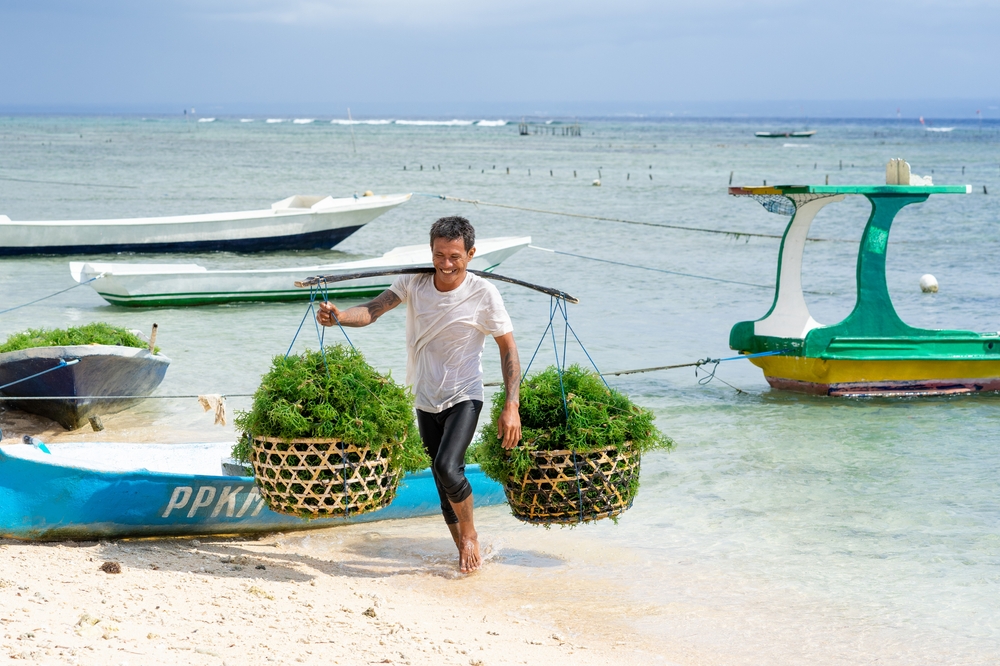ImpactAlpha, December 7 – The borrowers are small-scale ranchers, sustainable farmers and food entrepreneurs across more than a dozen tribal nations across the U.S., many of which have little access to financial services.
“We really sit down with producers and ask them about their goals: how many acres do they want to farm, or how many cows they want to have,” says Skya Duchenaux, founder of Akiptan, a community development financial institution in Eagle Butte, S.D., the first Native-run, agriculture-focused CDFI. “And then we put pen to paper and figure out how to get them there.”
In two years, the nonprofit CDFI has originated nearly $3.5 million in loans to 57 agribusinesses. Akiptan is one of about 70 Native community development financial institutions in the U.S. that serve as financial partners in Indigenous communities overlooked even by other non-profit CDFIs. Many are far smaller than Akiptan’s; the median loan book size for Native CDFIs is less than $1 million, according to data from the Minneapolis Federal Reserve.
“We got tired of seeing Native farmers get rejected for financing from the U.S. Department of Agriculture, or getting predatory financing that just wasn’t setting farmers up for success,” says Duchenaux, who grew up on a nearby ranch on the Cheyenne River Sioux Tribe Reservation. Working with the Intertribal Agricultural Council, she helped launch Akiptan in 2018, just a year after graduating from university. “We’re going to put our money where our mouth is and fill the gap ourselves,” she says.
High-touch
Native business owners operating on tribal lands are among the most financially underserved groups in the U.S. Roughly 86% of Native communities lack access to a financial institution. Bureaucratic, administrative and transactional hurdles often deter even mission-driven lenders and impact investors.
“Some aren’t so different from a regular bank,” says Dave Carrillo of nonprofit lender Native Community Capital.
Investors that have regulatory mandates to lend to underserved populations often find it easier to serve Latino or Black borrowers in major cities. Months-long timelines for deals to close can impose high transaction costs, even though loans to Native businesses are 90% guaranteed by the federal Bureau of Indian Affairs. The overwhelming majority of Native-owned businesses that get financed are based off-reservation.
“What I hear is ‘Why would I go through the brain damage of figuring out a deal in Indian country?’” says Carrillo, who partners with financial institutions to bring much needed capital to tribal communities. “We hear that it’s just too much work.”
Duchenaux acknowledges that small business lending in tribal communities can be time and cost intensive, especially given the size of the loans, which for Akiptan range from $20,000 to $100,000. In addition to ranchers and farmers, Akiptan has provided financing to food and herbal products company Sakari Farms, in Oregon, and Morning Light Kombucha in Kansas. A key part of its lending process involves business planning with its prospective borrowers.
“Because we spend a lot of time with our clients, it just costs more,” Duchenaux explains. Lenders to tribal businesses are “having to fix all of these broken systems and do so much financial literacy education,” she adds. “There’s a lot of technical assistance that goes with lending.”
The need for such small business support has only amplified during the COVID-19 pandemic, which has hit Indian Country especially hard.
“We decided to launch a small business loan program in January of 2020,” says Jeff Tickle of Cook Inlet Lending Center in Anchorage, Alaska, which had previously specialized in home mortgage lending. “The timing could not have been better.”
The 20-year-old nonprofit Native CDFI had completed just two loans when Anchorage shutdown because of COVID. Within weeks, Cook Inlet had received 700 applications for its business relief grants program, run in partnership with the city of Anchorage. It selected 120 businesses to each receive $10,000.
Cook Inlet is now disbursing another $5 million from the city as part of its COVID response strategy, “Survive-Adapt-Thrive.” Among the businesses it has supported are skincare studio Honey Bee Beauty and therapeutic massage business Hands On Health & Wellness. Like Akiptan, Cook Inlet pairs its financing with technical assistance.
Cook Inlet now needs capital itself to help the region’s Native businesses adapt. “It’s not a model that’s ever been tested for these small businesses, and so the loan product would have to be very flexible and very low-cost,” says Tickle.
Patient and flexible
For Akiptan, the CDFI designed its financing around agriculture cycles. The seven-year loans include five years of interest-only payments. “That way business owners can spend those first years growing their operations without having to worry about large principal payments,” Duchenaux says.
In spite of the challenges and resource intensity, it is possible to lend profitably to tribal businesses. Akiptan can now “kick out $100,000 pretty fast,” says Duchenaux, because it understands its borrowers well at this point. Indeed, she adds, the organization is on track to be financially self-sustaining within three years.
What is needed, says Duchenaux, is more organizations like Akiptan with a “patient capital” mindset for businesses on tribal lands. That includes understanding the operational challenges of securing space, utilities, internet and other services in order to set businesses on growth trajectories. “The driving factor for us,” she says, is “giving a producer financing that sets them up for success.”
What has enabled Native CDFIs like Akiptan to take such a customer-centric approach is free and patient startup capital for the organizations themselves. Akiptan’s startup capital came from the Native American Agriculture Fast Track Fund, which the organization used to leverage other grants and loans.
This year, it also secured a $250,000 seven-year loan from impact debt investor RSF Social Finance in San Francisco, which structured the terms around Akiptan’s own lending timeline. The deal was Akiptan’s first non-Native financing and RSF’s first investment in a financial intermediary.
“We haven’t done a lot of work with Native communities, and so we recognized that we weren’t the best one to serve Native agricultural producers,” explains Casey Johnson, who led the deal through RSF’s Food & Agriculture Collaborative. “Akiptan knows how to serve its community best.”
The collaboration, she adds, “lets the brilliance of people and partners already on the ground doing the work shine through,” and lets RSF advance the work through its national network of investors and donors.
The challenges and lessons of lending to Native businesses apply to community finance and impact investing more broadly
“If traditional financing was working, we wouldn’t need CDFIs,” Duchenaux says. “In the world we’re in right now, we’re starting to see all of the weak links in our broken systems. Those can only be fixed with patient, sustainable and innovative financing.”












